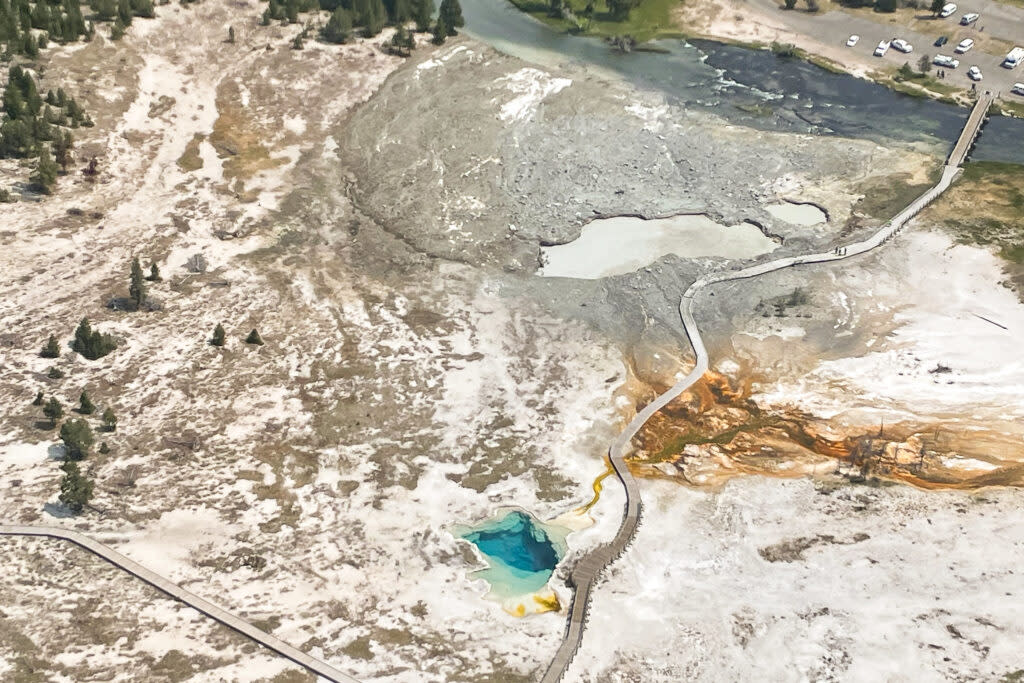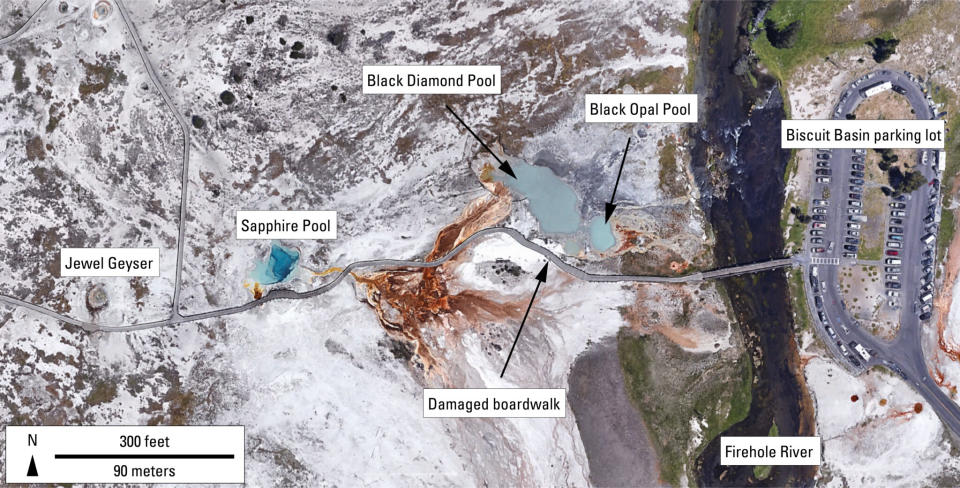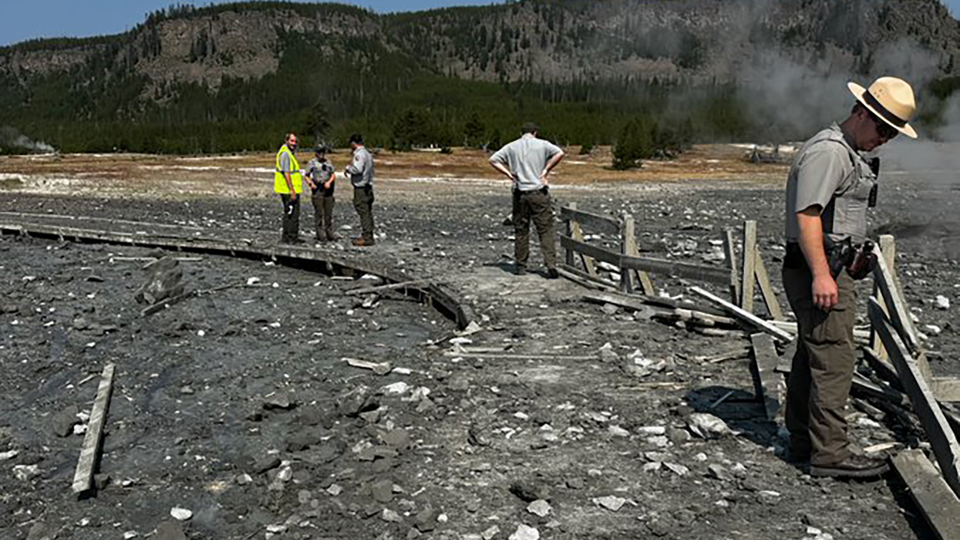Yellowstone Volcano Observatory releases preliminary report on Biscuit Basin explosion

Aerial view of Biscuit Basin after hydrothermal explosion. (Photo courtesy NPS / Joe Bueter)
Biscuit Basin in Yellowstone National Park will be closed for the rest of the 2024 season for safety concerns after Tuesday’s hydrothermal explosion sent rocks as large as 3 feet wide hundreds of feet into the air, damaging the boardwalk and reshaping nearby thermal pools, the park said late Wednesday.
Yellowstone National Park and the U.S. Geological Survey’s Yellowstone Volcano Observatory released a preliminary assessment Wednesday afternoon of Tuesday morning’s explosion, confirming there was no volcanic or seismic activity that caused it.
“The explosion, which sent steam and debris to a height of hundreds of feet above the ground, destroyed a nearby boardwalk and ejected grapefruit-sized rocks tens to hundreds of feet from the source,” wrote Michael Poland, the scientist-in-charge at the volcano observatory. “Some blocks closest to the explosion site are about 3 feet (1 meter) wide and weigh hundreds of pounds.”

Despite the large rocks showering down on the area and close to visitors who were on the boardwalk when the explosion happened, the park confirmed no injuries were reported. The volcano observatory said the largest blocks of debris largely were directed toward the Firehole River.
In the day since the explosion, Black Diamond Pool and Black Opal Pool remain murky because of the mud and debris that shot up out of the ground with the steam and boiling water. The explosion destabilized both pools’ edges, and the observatory said Black Diamond’s shape has changed slightly.
GET THE MORNING HEADLINES DELIVERED TO YOUR INBOX
In the hours after the explosion, Black Diamond pool showed some water bursts of up to 8 feet in the air, and by Wednesday morning, both pools were overflowing and sending murky water into the Firehole River.
Poland said small explosions of boiling water will be possible in Biscuit Bay in the coming months and that U.S. Geological Survey and National Park Service geologists would be monitoring changes in the basin, mapping debris and sampling water to see if there are changes to the basin’s hydrothermal system.
The park said there was an explosion similar in size to Tuesday’s in the 1880s at Excelsior Geyser, and smaller ones have been recorded in Biscuit Basin in 2009, Porcelain Terrance this past April, and in 1989 at Porkchop Geyser. The park said there are typically one or a few hydrothermal explosions within Yellowstone every year, but they typically occur in the backcountry.
While Biscuit Basin will stay closed through the rest of the season, the Grand Loop Road remains open, as do other nearby basins.


Daily Montanan is part of States Newsroom, a nonprofit news network supported by grants and a coalition of donors as a 501c(3) public charity. Daily Montanan maintains editorial independence. Contact Editor Darrell Ehrlick for questions: info@dailymontanan.com. Follow Daily Montanan on Facebook and X.

